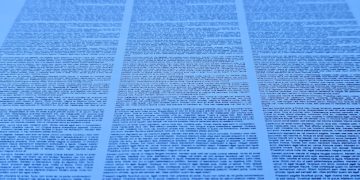Expedite Your 2025 Federal Grant Application: Insider Tips

Expediting your 2025 federal grant application involves meticulous planning, understanding agency priorities, leveraging technology, and maintaining proactive communication with grant officers to ensure timely submission and consideration.
Navigating the complex world of federal grants can be daunting, especially when time is of the essence. **How to Expedite Your 2025 Federal Grant Application: Insider Tips for Faster Processing** is a common question for organizations and individuals seeking funding.
Understanding the Federal Grant Landscape in 2025
The federal grant landscape is constantly evolving. Understanding the current trends and priorities will significantly impact your application’s success and processing time.
In 2025, expect to see increased emphasis on data-driven decision-making and community impact. Agencies will likely prioritize applications that demonstrate clear, measurable outcomes and address pressing national needs.
Key Priorities to Watch For
Staying informed about the key priorities of federal agencies is crucial. These priorities often reflect national goals and influence funding decisions.
- Focus on projects that align with the current administration’s policy agenda.
- Prioritize applications that address equity and inclusion.
- Demonstrate a strong understanding of community needs and how your project will meet those needs.
Utilizing Data to Strengthen Your Application
Data plays a vital role in demonstrating the need for your project and its potential impact. Using reliable data sources can significantly strengthen your application.
- Incorporate relevant statistics from government agencies like the Census Bureau or the Bureau of Labor Statistics.
- Use data to illustrate the problem your project addresses and the potential benefits of your proposed solution.
- Cite credible research studies and reports to support your claims.
Understanding the federal grant landscape and aligning your application with current priorities and data-driven insights is essential for faster processing and improved outcomes.

Preparing Your Application for Speed
The preparation stage is critical in expediting your grant application. Attention to detail and proactive planning can save you valuable time and reduce the likelihood of delays.
Start by thoroughly reviewing the solicitation guidelines and ensuring you meet all eligibility requirements. A well-prepared application is more likely to be processed quickly and efficiently.
Creating a Detailed Timeline
A detailed timeline can help you stay organized and on track throughout the application process. It’s essential to break down the tasks and allocate sufficient time for each step.
- Identify all the necessary steps, from researching the grant opportunity to submitting the final application.
- Set realistic deadlines for each task and track your progress regularly.
- Allocate time for revisions and ensure all required documents are ready before the deadline.
Ensuring Compliance with Requirements
Compliance with all requirements is non-negotiable. Failure to meet these requirements can lead to disqualification and delays. Carefully review the solicitation guidelines to ensure you comply with all instructions.
- Review the eligibility requirements and ensure your organization or project meets them.
- Adhere to formatting guidelines, page limits, and other specifications.
- Ensure all required documents are complete and accurate.
Proper preparation and meticulous attention to detail can significantly expedite your grant application process, ensuring a smooth and timely submission.
Leveraging Technology for Efficiency
Technology can be a powerful tool for streamlining your grant application process. Utilizing the right tools and platforms can save you time and improve the quality of your application.
From project management software to online collaboration tools, technology can help you stay organized, collaborate effectively, and submit your application efficiently.

Utilizing Project Management Software
Project management software can help you organize your tasks, track deadlines, and collaborate with your team effectively. These tools can streamline your workflow and ensure everyone stays on the same page.
- Track progress, assign tasks, and manage deadlines with ease.
- Improve communication and collaboration among team members.
- Identify potential bottlenecks and address them proactively.
Using Online Collaboration Tools
Online collaboration tools can facilitate seamless communication and document sharing among team members. These tools can enhance productivity and reduce the risk of errors.
- Use cloud-based document storage for easy access and version control.
- Utilize video conferencing for regular team meetings and discussions.
- Employ collaborative writing tools for real-time editing and feedback.
Leveraging technology can significantly enhance the efficiency of your grant application process, helping you stay organized, collaborative, and on track for timely success.
Communicating Effectively with Grant Officers
Establishing and maintaining effective communication with grant officers can play a crucial role in expediting your application’s processing. Proactive communication demonstrates your commitment and helps clarify any uncertainties.
Engaging in open dialogue with grant officers can provide valuable insights, address potential concerns, and ensure your application is thoroughly understood.
Understanding the Importance of Timely Inquiries
When uncertainties arise, making timely inquiries is essential. Addressing concerns promptly can prevent misunderstandings and delays.
Grant officers typically welcome inquiries that demonstrate a genuine interest in the grant opportunity and a commitment to submitting a high-quality application. Be sure to phrase your questions clearly and respectfully.
Building Rapport with Grant Officers
Building rapport with grant officers involves establishing a professional and respectful relationship. Positive interactions can facilitate clearer communication and foster a collaborative environment.
Grant officers are more likely to assist applicants who demonstrate professionalism, attentiveness, and a genuine interest in the grant opportunity. Be courteous and appreciative of their time.
Effective communication with grant officers can significantly impact your application’s journey, fostering understanding, collaboration, and, ultimately, faster processing.
Avoiding Common Pitfalls and Delays
Grant applications are intricate processes where avoiding common pitfalls and delays becomes paramount. Recognizing and proactively addressing potential issues can save significant time and effort, ensuring a smoother application experience.
From overlooked eligibility requirements to incomplete documentation, these oversights can lead to unnecessary delays or even rejection. Being aware of these typical issues and implementing preventive measures is vital for a timely and successful outcome.
Addressing Incomplete Applications
- Always cross-reference: Ensure every required field is completed and every document is included as mandated by the grant guidelines. An incomplete application can be summarily rejected.
- Use a checklist: Develop a comprehensive checklist based on the grant guidelines and verify each item thoroughly before submission.
Incomplete applications rank high among the common reasons for delays. Agencies often have strict requirements for the detail and scope of information needed, and failing to meet these can cause the application to be returned or put on hold.
Handling Eligibility Issues
- Thoroughly review requirements: Carefully assess all eligibility criteria – including the applicant type, project scope, geographic location, and compliance mandates – before commencing the application.
- Prepare supporting documentation: Gather and organize all necessary documentation that proves your eligibility, such as organizational documents, financial statements, or letters of support from partners or community stakeholders.
Problems with eligibility can cause serious disruptions. Even if the project is well-designed and has high potential, failing to satisfy the specified eligibility criteria will derail the process.
Optimizing Your Application for Reviewers
Optimizing your grant application for federal reviewers involves understanding their perspective, priorities, and what they expect from a competitive proposal.
Reviewers typically assess applications based on criteria such as alignment with agency priorities, the strength of the proposed solution, the applicant’s capacity, and the potential impact of the project. Presenting the information in a clear, compelling manner can significantly increase your chances of success.
Using Clear and Concise Language
- Avoid jargon: Use plain language that is easily understandable by all reviewers, regardless of their specific expertise.
- Be specific: Replace vague descriptions with precise details, measurable goals, and concrete action plans.
Reviewers often handle hundreds to thousands of applications during a cycle, therefore it’s paramount to keep your application easy to understand.
Demonstrating Impact and Sustainability
- Quantify outcomes: Whenever possible, quantify the expected outcomes of your project in terms of specific, measurable results.
- Present evidence: Back up your claims with solid evidence, such as pilot data, expert opinions, or examples from successful projects in similar contexts.
Reviewers want to see projects that not only address a need, but also have a lasting positive effect. An application must demonstrate how the project will create meaningful change.
| Key Point | Brief Description |
|---|---|
| 🎯 Alignment | Match your project goals with federal agency priorities to increase approval chances. |
| ⏱️ Preparation | Develop a detailed timeline and ensure full compliance to keep the application on track. |
| 💻 Technology | Employ project management and collaboration tools for streamlined workflows. |
| 🤝 Communication | Engage proactively with grant officers for clarity and to build rapport. |
Frequently Asked Questions
Incomplete applications, non-compliance with eligibility criteria, and vague project descriptions are common issues. Thorough review and attention to detail are essential to avoid these.
Technology helps by streamlining project management, promoting team collaboration, and ensuring document control. Utilizing project management software and online collaboration tools enhances efficiency.
Communicate professionally and respectfully, making timely inquiries and establishing a collaborative rapport. This ensures open dialogue and clarifies any uncertainties.
Research current policy agendas and incorporate data demonstrating community impact. Focus on projects that address equity and offer measurable outcomes to meet their goals.
Clear language matters as grant reviewers handle numerous apps. Avoiding jargon and being specific ensures they easily comprehend your project, increasing its chances of funding approval.
Conclusion
Expediting your 2025 federal grant application involves meticulous preparation, strategic technology utilization, effective communication, and a clear understanding of agency priorities. By implementing these insider tips, you can significantly enhance your chances of faster processing and successful funding.



